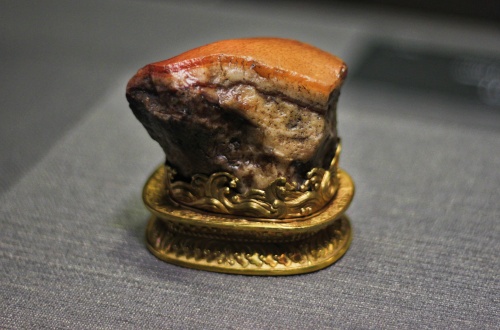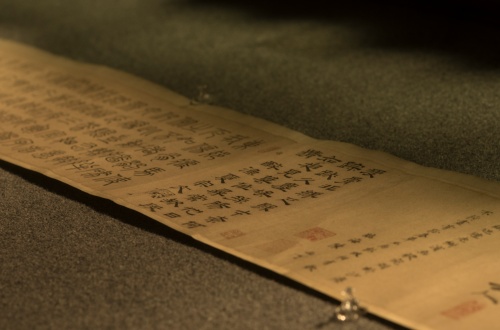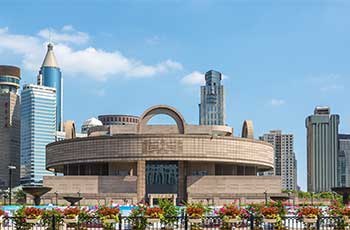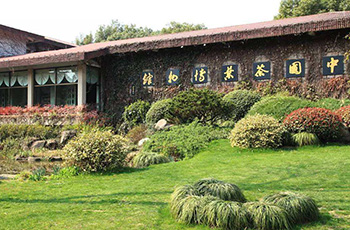National Palace Museum

Founded in 1962 and completed in 1965, the National Palace Museum is also called the Taipei Palace Museum. It’s a famous museum for Chinese history and art, and one of China’s three main museums. Its collection focuses more on nice artistic carvings, calligraphy and paintings than the Palace Museum in Beijing. As of 2021, data shows a total of 698,854 cultural relics are kept here. These include imperial collections from the Palace Museum in Beijing, Shenyang Palace Museum and Chengde Mountain Resort, plus fine artifacts given by people at home and abroad.
- Chinese name:国立故宫博物院 Guólì Gùgōng Bówùyuàn
- Recommended Duration: 3-4 hours
- Entrance Fee: Adult: NTD 350
- Opening Hours: Tue-Sun 09:00-17:0
- Best time to visit: Year-round
- Address: No. 221, Section 2, Zhishan Road, Shilin District, Taipei City
-
How to get there:
By Metro: Take MRT Danshui-Xinyi Line to Shilin Station, Exit 1, transfer to Bus R30/255/304 to Palace Museum Station
By Bus: Take Bus 255, 304, Small 18, Small 19 directly to Palace Museum Station
Highlights of National Palace Museum
Jadeite Cabbage
 Jadeite Cabbage
Jadeite CabbageOne of the National Palace Museum’s most precious treasures, the Jadeite Cabbage is carved from jadeite. Craftsmen used the jade’s colors and textures skillfully to make it a lifelike cabbage. Its leaves are bright green with clear veins, and its stalk is pure white. On it are two vivid katydids and locusts—this stands for wanting more children and descendants. The whole work looks real and is well-made. It shows how great Qing Dynasty jade carvers were, and always makes visitors admire ancient craftsmen’s wisdom and creativity.
Meat-Shaped Stone
 Meat-Shaped Stone
Meat-Shaped StoneIt and the Jadeite Cabbage are called the two "most popular exhibits" of the National Palace Museum. This stone looks just like a piece of streaky pork. Its meat texture, fat and lean layers, and surface sheen are all very similar to real streaky pork. Artisans carved this piece skillfully from natural jade, and it mixes nature’s beauty with human creativity. Visitors often stop to look at it and take photos, as they appreciate the artistry and the wonder of nature.
Calligraphy and Painting Collections
 Calligraphy Collections
Calligraphy CollectionsA large number of precious calligraphy and painting works are kept at the National Palace Museum, and they include masterpieces from different historical periods. Wang Xizhi’s Kuai Xue Shi Qing Tie (Clear Weather After Snow) and Fan Kuan’s Travelers Among Mountains and Streams are two examples. These works are not just of high artistic value—they are also treasures of traditional Chinese culture. Visitors can get close to these works in the museum’s halls to appreciate their brush and ink charm, feel how ancient scholars and artists expressed emotions and their art styles, and see how deep and wide Chinese calligraphy and painting art is.
Palace Artifacts
 The imperial seals used by Emperor Qianlong
The imperial seals used by Emperor QianlongA rich collection of palace artifacts—like gold and silverware, porcelain, enamelware and clocks—is also kept in the museum. Made with great skill and complex craft, these artifacts fully show how luxurious and dignified the Qing Dynasty court was. Take various nice gold and silver tableware, beautiful enamel ornaments and clocks with special shapes: each is a fine work of art. These items are not just useful; they also carry important palace culture. Through them, visitors can learn about the daily life and cultural style of the Qing Dynasty court.
Educational Value
Nearly 700,000 cultural relics are kept at the National Palace Museum, with a time span from the Neolithic Age to the late Qing Dynasty. They cover different types like bronze ware, jade artifacts, ceramics, calligraphy, paintings and documents, and together make a complete sequence showing how Chinese material civilization developed. These relics are not just separate exhibits—they are "living fossils" of history. Compared with written records, this way of teaching through real objects is easier to understand and more striking. For people of all ages, it helps them move beyond scattered bits of historical knowledge, see clearly how China’s 5,000-year civilization has changed over time, and learn how culture has been passed down nonstop in various ways.
Activities to do at National Palace Museum
Fun Handicraft Activities: At the Children's Learning Center on the first floor of the National Palace Museum, there are game activities such as building the bridge from Along the River During the Qingming Festival. These activities allow children to learn about cultural relics from different perspectives.
Drop us a line and we'll connect you with the top China expert in no time!
 National Museum of China
National Museum of China  Shanghai Museum
Shanghai Museum  National Tea Museum
National Tea Museum  China National Silk Museum
China National Silk Museum